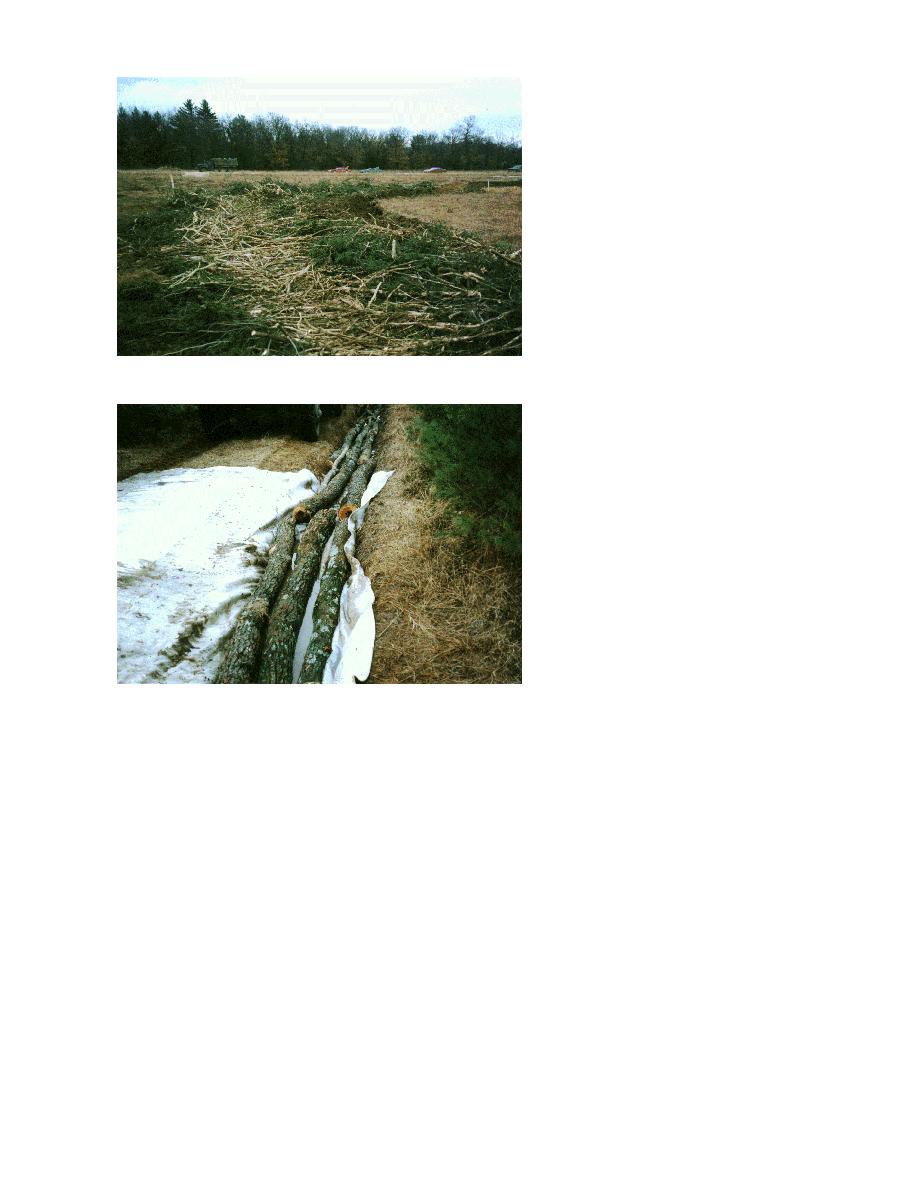
had slash that was already less than 8
cm (3 in.) in diameter.
On the pentagonal loop trail, the slash
was laid in two layers in a herringbone
pattern. The first layer was placed at a
45 angle to the direction of travel. The
second layer was 90 to the first layer.
Only slash under 8-cm (3-in.) diameter
was used.
Geotextiles, used at each of the test
sites, were placed quickly and required
minimal personnel. Sections of mate-
rial were unrolled, cut and placed by
hand. They were dragged into place on
the slope and forklifted onto the
Figure 9a. Slash--pentagonal loop trail.
wooded trails.
To prevent slipping and bunching of
fabric during trafficking, anchoring
techniques were tried in the field, but
these techniques require further devel-
opment. Cover was used wherever tank
turning/cornering was anticipated.
TEST SECTION PERFORMANCE
EVALUATION
The HEMTT used for trafficking was
a M984E1 wrecker/recovery vehicle in
good condition. It was operated using
both on- and off-road recommended tire
pressures. On-road tire inflation pres-
sures for the HEMTT are 413 kPa (60
b. Larger diameter logs used to fill large rut.
psi) on the four front tires and 689 kPa
(100 psi) on the four rear tires. The rec-
Figure 9. Slash.
ommended pressures for off-road are
138 kPa (20 psi) on the four front tires
recommended maximum size log was 20-cm (8-
and 689 kPa (100 psi) on the four rear tires. Al-
in.) diameter.
though the ride and traction were vastly improved
The slash test section on the wooded trail was
using the off-road pressure, steering was less re-
30 m (100 ft) long; the southern 15 m (50 ft) was
sponsive.
covered with a geotextile before construction
The M60A3 tank was in marginal condition
began. There was a large rut in the easterly wheel
and worn sprockets likely contributed to the loss
path in the slash test section. This rut was filled
of a track during the initial passes on the wooded
with logs (approx. 15 cm [6 in.] in diam.), running
trail prior to construction.
parallel to the rut (Fig. 9b). It took about five rows
After test sections were built, the trail was traf-
of logs to fill the rut. Next the slash was delivered.
ficked 50 passes with an M60A3 (M60) tank and
In this test section, the maximum diameter slash
50 passes with an M984E1 wrecker/recovery
allowed was 8 cm (3 in.). The first few truckloads
HEMTT (App. G). Sloped trail test sections also
had trees that were larger than 8 cm (3 in.) in
included a test of the surface traction by climbing
diameter. These trees were delivered to the site,
from a stop and downhill braking on each test
cut up on site, and placed. The remaining trucks
surface. The pentagonal loop trail was trafficked
15



 Previous Page
Previous Page
